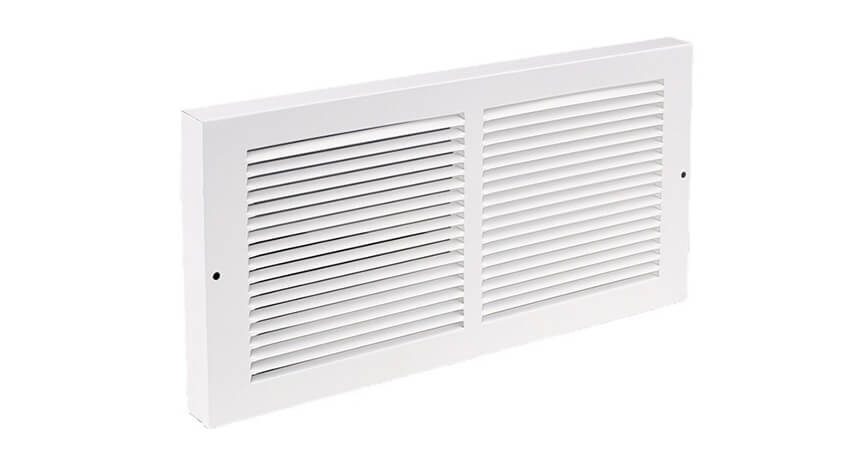Basic styles and sizes of HVAC Floor Grilles
At AIREVERPEAK(XingSheng), we specialize in crafting high-quality HVAC floor grilles that are not just products, but solutions designed to enhance any space. Our expertise lies in understanding the intricate balance between functionality and aesthetics in HVAC systems.
- Unmatched Quality: Each grille we produce reflects our commitment to excellence. Made with top-grade materials, our products are synonymous with durability and reliability.
- Innovative Design: We blend innovative design with functionality, offering a range of styles that complement any decor while optimizing airflow.
- Custom Solutions: Recognizing the uniqueness of each space, we offer custom-sized grilles to perfectly fit your specific needs.
- Customer-Centric Approach: Our team is dedicated to providing exceptional service, ensuring every customer finds the ideal grille for their space.
- Sustainable Practices: We’re committed to sustainability, using eco-friendly materials and processes in our production.
Feature Description
- Mill finish or powder-coated
- Size can be customized
- Dimensions tolerance is ± 1mm
- Made of aluminum profile 6063 T5
Heavy Duty Return Air Floor Grille Without Filter
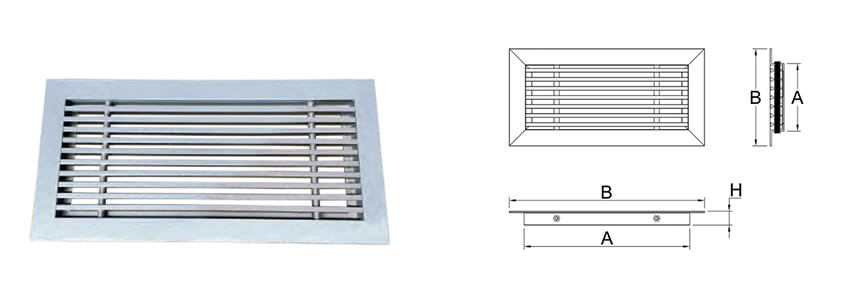
| Code | Neck Size(A) | Face Size(B) | H |
| RAFG 300100 | 295*95 | 341*141 | 21.5 |
| RAFG 300150 | 295*145 | 341*191 | 21.5 |
| RAFG 350100 | 345*95 | 391*141 | 21.5 |
| RAFG 350150 | 345*145 | 391*191 | 21.5 |
| RAFG 400100 | 395*95 | 441*141 | 21.5 |
| RAFG 400150 | 395*145 | 441*191 | 21.5 |
Heavy Duty Return Air Floor Grille With Filter
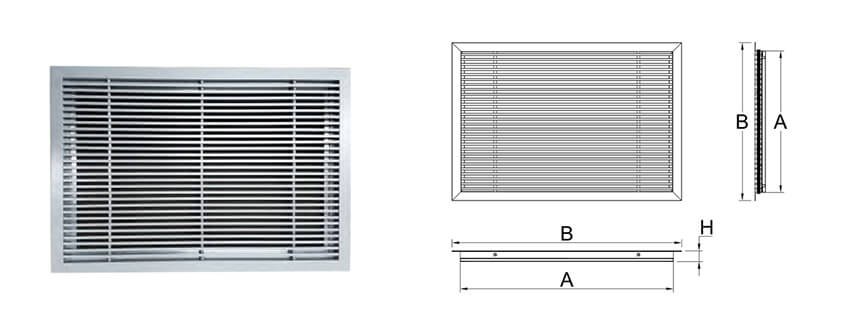
| Code | Neck Size(A) | Face Size(B) | H |
| RAFGF 600400 | 595*395 | 641*441 | 30.5 |
| RAFGF 900400 | 895*395 | 941*441 | 30.5 |
Heavy Duty Floor Grille
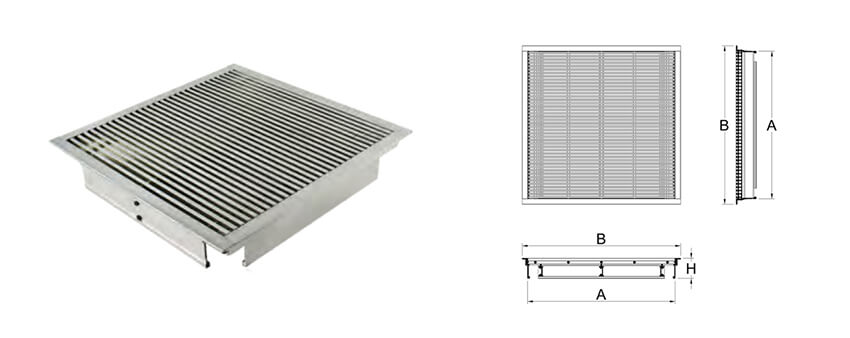
| Code | Neck Size(A) | Face Size(B) | H |
| FG-A 600600 | 574*574 | 599*599 | 76 |
Rectangle Plastic Floor Grille

| Code | Neck Size(A) | Face Size(B) | H |
| RPFG 3″x10″ | 247*72 | 282*105 | 38 |
| RPFG 4″x10″ | 247*95 | 282*130 | 38 |
| RPFG 4″x12″ | 297*95 | 333*130 | 38 |
Catalogue of HVAC Floor Grilles: Download
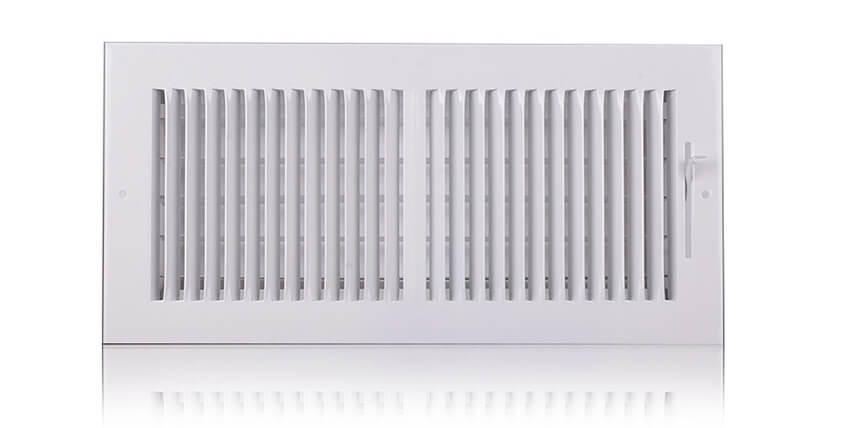
If you want to know more, please click below:
- HVAC Linear Slot Diffusers – The Ultimate Guide
- HVAC Egg Crate Diffuser – The Ultimate Guide
- HVAC Jet Nozzle Diffuser – The Ultimate Guide
- HVAC Linear Bar Grilles – The Ultimate Guide
- HVAC Air Swirl Diffusers – The Ultimate Guide
- HVAC Round Ceiling Diffusers – The Ultimate Guide
- Round Ceiling Diffusers – The Ultimate Guide
- HVAC Return Air Grille – The Ultimate Guide
- Exhaust Air Louver – The Ultimate Guide
- HVAC Registers – The Ultimate Guide
HVAC Floor Grilles – The Ultimate Guide
1. What are the HVAC floor grilles?
HVAC floor grilles are key components in heating and cooling systems, designed to cover the duct openings in your floors. They effectively manage airflow, ensuring a comfortable indoor climate, while also preventing debris from entering the ductwork. Not just functional, these grilles come in various styles and materials, adding an aesthetic touch to your space while serving as durable, essential elements of your HVAC system.
2. How do I determine the correct size of floor grille needed for my HVAC system?
Choosing the right size for an HVAC floor grille is crucial for optimal performance and efficiency. Here’s a straightforward guide:
- Measure the Duct Opening: The first step is to accurately measure the duct opening in your floor where the grille will be installed. Use a tape measure to find the length and width of the opening. It’s important to measure from inside edge to inside edge to get the most accurate dimensions.
- Understand the Grille Sizing: HVAC floor grilles are typically sized based on the duct opening they’re meant to cover. For instance, a grille labeled as 10×6 inches is designed to fit over a 10×6 inch duct opening. The actual face size of the grille will be slightly larger to ensure it covers the entire opening and sits flush against the floor.
- Consider the Airflow Requirements: The size of your grille also impacts airflow. If your room requires more airflow, you might need a larger grille or one with a design that allows for more air passage. Consulting with an HVAC professional can provide guidance based on your specific system and room size.
- Take into account the Aesthetic Aspect: While function is key, the size of your grille should also complement the room’s aesthetics. A grille that is too large or too small can look out of place, so consider the overall look you wish to achieve.
- Room for Adjustments: Finally, keep in mind that some floors or duct openings may not be perfectly square or even. In such cases, adjustable grilles or custom-sized grilles can provide a solution.
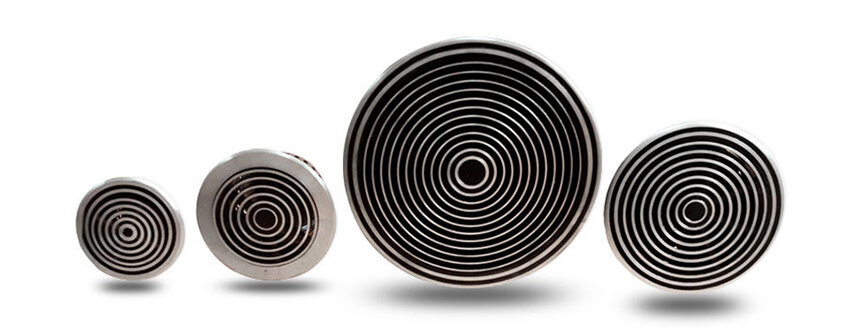
3. What materials are HVAC floor grilles typically made from, and which is best for durability?
The best material for an HVAC floor grille depends on the specific requirements of the environment and usage. Steel and stainless steel stand out for their durability and strength, making them ideal for high-traffic and demanding environments. However, other materials like aluminum, brass, and plastic can be suitable for less demanding applications where aesthetics or cost are major considerations.
Common Materials Used in HVAC Floor Grilles
- Aluminum: Widely used due to its lightweight and corrosion-resistant properties. It’s ideal for general applications and offers a balance of durability and cost-effectiveness.
- Steel: Known for its strength, steel grilles can withstand heavy foot traffic and high-impact environments. They are often used in commercial and industrial settings.
- Stainless Steel: Offers enhanced corrosion resistance compared to regular steel. Stainless steel grilles are ideal for humid or coastal areas where rust is a concern.
- Brass: Adds a decorative touch and is used in settings where appearance is a priority. While not as strong as steel, brass grilles can still offer reasonable durability.
- Plastic: Often used for its versatility and cost-effectiveness. Plastic grilles are rustproof and lightweight but generally less durable than metal options.
Which Material is Best for Durability?
- Steel and Stainless Steel: For sheer durability, steel and stainless steel are top choices. They can withstand high foot traffic and resist wear and tear effectively.
- Environmental Factors: Stainless steel is particularly suitable in areas with high moisture or chemical exposure, as it resists corrosion better than regular steel.
- Weight-Bearing Capacity: If the grille needs to support heavy loads, steel is the preferred option.
- Cost vs. Durability: While metal grilles are more durable, they are also more expensive. The choice often depends on budget constraints and the specific needs of the installation.
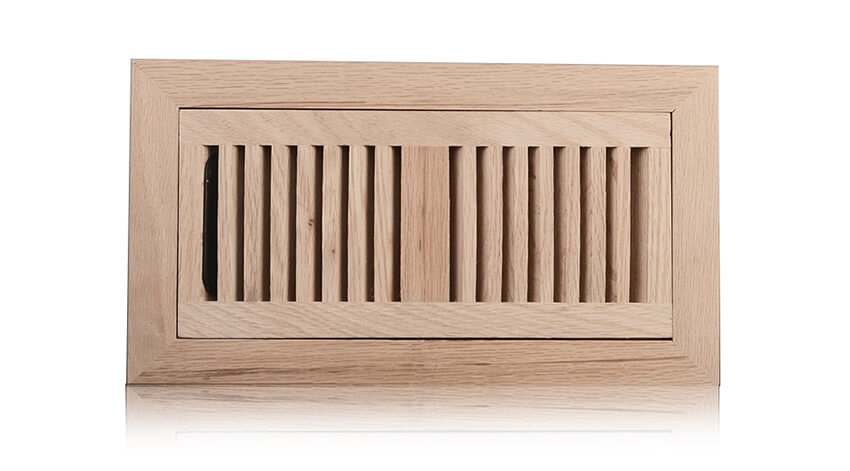
4. What are the different types of HVAC floor grilles available?
- Design: Characterized by their long, narrow design and parallel lines.
- Application: Ideal for modern interiors, providing a sleek, unobtrusive look.
- Air Flow: Effective at distributing air across a wide area.
- Appearance: Feature small holes over the entire surface.
- Functionality: Offer even air distribution and are commonly used in residential and commercial settings.
- Aesthetics: Provide a minimalistic look while being highly functional.
3. Bar Grilles
- Structure: Consists of individual bars spaced apart, usually in a linear pattern.
- Durability: Typically more robust, making them suitable for areas with high foot traffic.
- Design Variations: Available in various bar spacings and patterns.
- Unique Feature: Designed with a grid pattern resembling an egg crate.
- Visibility: Allow maximum visibility into the ductwork, making it less discreet.
- Air Flow Capacity: Excellent for high air volume applications.
- Personalization: Tailored to specific design requirements and dimensions.
- Versatility: Can be made from various materials including aluminum, steel, and even wood.
- Use Case: Ideal for unique architectural needs or when matching specific interior designs.
6. Heavy-Duty Grilles
- Build: Constructed for enhanced durability and strength.
- Material: Often made from heavy-gauge steel or reinforced materials.
- Application: Suitable for industrial settings or areas with heavy machinery.
7. Decorative Grilles
- Aesthetic Focus: Designed with an emphasis on aesthetics.
- Material Variety: Available in materials like brass, bronze, or even decorative woods.
- Suitability: Perfect for adding a touch of elegance to any space.
5. Can you explain the difference between heavy-duty and light-duty floor grilles?
Selecting between heavy-duty and light-duty floor grilles depends on the specific requirements of the environment they will be used. Heavy-duty grilles are essential for industrial or high-traffic areas due to their strength and durability. In contrast, light-duty grilles are sufficient for residential or light commercial spaces, offering more in terms of design and aesthetic appeal.
Heavy-Duty Floor Grilles: Built for Strength
- Material Composition: Typically made from stronger materials like heavy-gauge steel or reinforced aluminum.
- Design for Durability: Engineered to withstand high levels of stress, pressure, and foot traffic.
- Common Applications: Ideal for commercial and industrial settings, including warehouses, manufacturing plants, or areas with heavy machinery.
- Weight-Bearing Capacity: Specifically designed to support heavier weights, making them suitable for high-impact environments.
- Aesthetic Considerations: Often more utilitarian in appearance, prioritizing function and durability over style.
Light-Duty Floor Grilles: Designed for General Use
- Material Choices: Usually crafted from lighter materials such as aluminum, plastic, or thin steel.
- Functionality: Adequate for standard foot traffic and general air distribution needs.
- Ideal Settings: Best suited for residential or light commercial environments like offices, homes, or retail spaces.
- Load Capacity: Not intended for heavy loads or high-impact use.
- Aesthetic Flexibility: Often available in a variety of designs and finishes to complement interior décor.
Key Differences at a Glance
- Durability: Heavy-duty grilles are more robust and can endure rigorous conditions, whereas light-duty grilles are suitable for less demanding environments.
- Material Strength: The material strength of heavy-duty grilles is greater, catering to tougher conditions.
- Application Scope: Heavy-duty grilles are a necessity in areas with heavy traffic or machinery, while light-duty grilles suffice in everyday residential or light commercial settings.
- Design and Style: Light-duty grilles offer more variety in design, catering to aesthetic preferences.
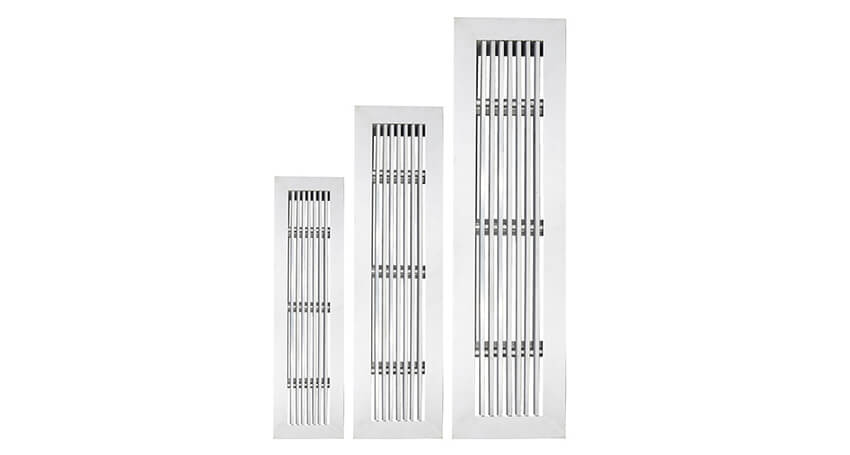
6. What are the standard sizes of floor grilles, and are custom sizes available?
Selecting the right size for floor grilles in HVAC systems is essential for efficient air distribution and aesthetics. While there are standard sizes available, custom options can also be explored to meet specific requirements.
Understanding Standard Sizes
- Common Dimensions: Standard sizes for floor grilles typically range from small dimensions like 4×10 inches to larger sizes such as 24×36 inches.
- Standard Increments: These sizes usually increase in 2-inch increments, accommodating a variety of standard duct sizes.
- Depth Factors: Apart from length and width, the depth of the grille is also a consideration, especially for heavy-duty applications.
- Shape Variations: Standard sizes apply to both rectangular and square grilles, with the rectangular option being more common in residential and commercial settings.
Custom Sizes: Tailoring to Specific Needs
- Customization Availability: For spaces that require non-standard sizes, custom floor grilles are a viable solution.
- Design Flexibility: Custom grilles can be designed to fit unique dimensions, shapes, or specific design preferences.
- Material Choices: Just like standard grilles, custom options can be made from various materials like aluminum, steel, or even decorative metals.
- Considerations for Custom Grilles: It’s important to consider the lead time and cost, as custom fabrication can be more expensive and time-consuming than standard options.
Balancing Function and Aesthetics
- Functionality: The primary function of the grille should guide the size choice. Adequate airflow and compatibility with existing ductwork are paramount.
- Aesthetic Integration: Size should also complement the interior design. Custom sizes allow for more seamless integration with the flooring and overall room aesthetics.
While standard sizes of floor grilles cater to most typical requirements, the option of custom fabrication provides flexibility for unique dimensions and design needs. Understanding both the standard and custom possibilities ensures a well-fitted, functional, and aesthetically pleasing floor grille for any space.
7. How do I determine the right size of floor grille for my project?
Choosing the correct size for a floor grille is crucial in any HVAC project. The right size ensures optimal airflow, and efficiency, and integrates well with the overall design of the space.
Step-by-Step Guide to Determine the Right Size
- Assess the Duct Opening Size
- Primary Measure: Begin by measuring the size of the duct opening where the grille will be installed. This is typically the starting point for determining grille size.
- Width and Length: Measure the width and length of the opening to the nearest inch. This measurement is your guideline for the grille size.
- Consider the Air Flow Requirements
- HVAC System Capacity: Understand the airflow capacity of your HVAC system. Larger spaces or systems with higher capacity might require larger grilles for efficient air distribution.
- Consult with Professionals: If unsure, consulting with an HVAC professional can provide insights into the appropriate size based on airflow needs.
- Factor in Load-Bearing Capacity
- Traffic Consideration: If the grille will be placed in a high foot traffic area, ensure it is capable of withstanding the load. This may influence the thickness and material of the grille.
- Aesthetics and Integration
- Visual Harmony: The grille should aesthetically align with the floor and room design. Consider the visual impact of the grille size in relation to the overall space.
- Custom Options: For unique spaces, custom-sized grilles can be considered to perfectly match the design requirements.
- Review Standard Sizes and Custom Options
- Standard Sizes: Familiarize yourself with standard grille sizes. They often range from small (4×10 inches) to large (24×36 inches), increasing in 2-inch increments.
- Custom Fabrication: If standard sizes do not fit your requirements, explore custom fabrication options.
Determining the right size of a floor grille involves a balanced consideration of duct opening measurements, airflow requirements, load-bearing capacity, and aesthetic integration. Whether you opt for standard sizes or custom-made grilles, ensuring the right fit is essential for the efficiency and visual appeal of your project.
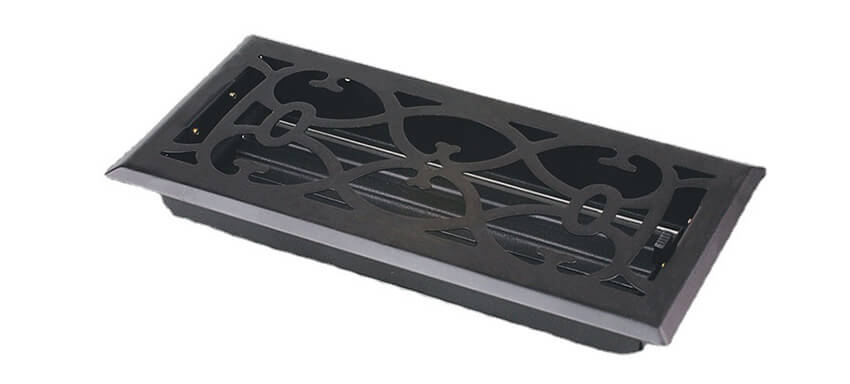
8. Are there any specific maintenance requirements for different types of floor grilles?
Maintaining floor grilles is essential for ensuring the longevity and efficiency of HVAC systems. Different types of grilles may have specific maintenance needs depending on their material and design.
Maintenance for Common Types of Floor Grilles
- Aluminum Grilles
- Regular Cleaning: Wipe down with a damp cloth and mild detergent. Avoid abrasive cleaners that can damage the finish.
- Corrosion Check: Although aluminum is resistant to corrosion, check for any signs in harsh environments.
- Inspection Frequency: Bi-annual inspections are typically sufficient.
- Steel Grilles
- Rust Prevention: Regularly check for rust, especially in humid conditions. Treat any signs of rust immediately to prevent spread.
- Cleaning: Use a mild detergent and water. For tougher stains, a mild steel cleaner can be used.
- Painting: If the paint chips, a touch-up may be necessary to prevent rust.
- Stainless Steel Grilles
- Cleaning: Use a soft cloth and stainless-steel cleaner to maintain its sheen and prevent smudges.
- Avoid Harsh Chemicals: Harsh chemicals can damage the stainless-steel surface.
- Regular Checks: Stainless steel is durable, but regular checks for any mechanical damage are advisable.
- Plastic Grilles
- Gentle Cleaning: Clean with soapy water and a soft cloth. Harsh chemicals or abrasive tools can scratch the surface.
- UV Damage Check: Over time, plastic may become brittle due to UV exposure. Check for any signs of brittleness or discoloration.
- Frequent Checks: Plastic grilles may require more frequent checks due to their lower durability compared to metal grilles.
- Wood Grilles
- Wood-Specific Care: Use wood cleaners to maintain the finish and protect the material.
- Moisture Watch: Wood can warp or rot in moist environments, so ensure the grille is not exposed to prolonged moisture.
- Refinishing: Periodic refinishing may be required to maintain appearance and integrity.
General Maintenance Tips
- Regular Inspections: Regardless of the material, regular inspections can help identify and address issues early.
- Proper Installation: Ensure grilles are properly installed to avoid unnecessary damage or wear.
- Consult Manufacturer Guidelines: Always refer to the manufacturer’s maintenance instructions for specific care requirements.
Each type of floor grille requires a tailored approach to maintenance, considering its material and environmental exposure. Regular care and proper cleaning can significantly extend the life and appearance of these essential HVAC components. Understanding and adhering to these maintenance requirements ensures that your floor grilles remain functional and aesthetically pleasing for years to come.
9. Can floor grilles be customized in terms of color or finish?
Floor grilles, an essential component of HVAC systems, don’t just need to be functional; they can also be stylish. Customizing their color and finish allows them to blend seamlessly with the interior decor or even stand out as a design element.
Color Customization: Matching Your Decor
- Paint Options: Most metal grilles (like aluminum or steel) can be painted in a wide range of colors. This allows them to match or contrast with the surrounding flooring or walls.
- Powder Coating: A durable and high-quality option, powder coating offers a wide color spectrum and ensures a longer-lasting finish.
- Wood Grilles: For wood grilles, staining or painting options are available to match the color with the interior woodwork.
Finish Varieties: Enhancing Aesthetic Appeal
- Brushed Metal Finish: Popular for stainless steel grilles, a brushed finish adds a sophisticated, modern look.
- Polished Finish: Offers a shiny, reflective surface, ideal for creating a more luxurious appearance.
- Matte Finish: A matte finish can give a more understated, contemporary look, especially on metal grilles.
- Textured Finishes: Textured paints or coatings can add a unique touch, providing both visual appeal and additional grip.
Custom Design Services
- Professional Consultation: Many manufacturers offer consultation services to help select the best color and finish for your specific needs.
- Digital Previews: Some providers can offer digital renderings to preview how the customized grille will look in your space.
Considerations for Customization
- Durability: Ensure that the chosen color and finish are suitable for the grille’s material and the environment it will be placed.
- Maintenance: Some finishes may require more maintenance than others, especially in high-traffic areas.
- Cost: Custom colors and finishes may incur additional costs compared to standard options.
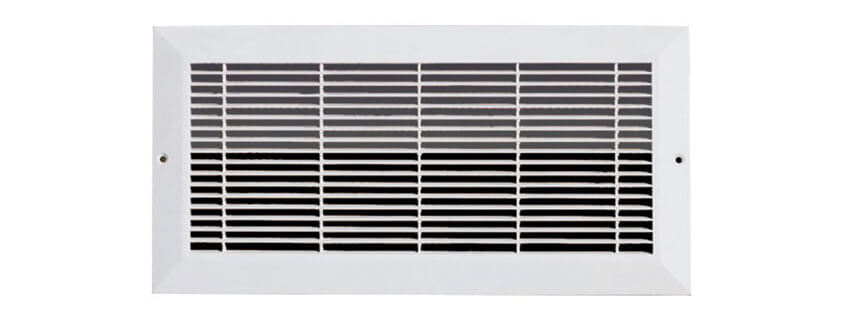
10. How do floor grilles affect airflow and HVAC efficiency?
Floor grilles are more than just architectural elements, and are crucial for the efficient operation of HVAC systems. Their design, placement, and maintenance play a significant role in managing airflow and maintaining system efficiency.
Influencing Airflow Dynamics
- Distribution of Air: Floor grilles are strategically placed to facilitate the even distribution of air throughout a space. Their design and placement determine how air circulates, impacting both temperature and air quality.
- Design and Pattern: The pattern and size of the grille’s openings directly affect airflow. Larger openings allow more air to pass through, while smaller or more intricate designs can restrict flow.
Enhancing HVAC Efficiency
- Optimized Air Delivery: Properly designed and placed floor grilles ensure that air is delivered efficiently to all parts of a room. This means the HVAC system doesn’t have to work as hard to maintain a consistent temperature, leading to energy savings.
- Preventing System Strain: Grilles that facilitate smooth airflow prevent the HVAC system from straining to circulate air, thereby extending the lifespan of the system.
Considerations for Maximum Efficiency
- Grille Size Relative to Duct Size: The size of the grille should be compatible with the duct size to ensure efficient airflow.
- Location Matters: The placement of grilles affects how air travels through a room. For example, placing grilles near windows can help counteract heat loss or gain from the windows.
- Maintenance is Key: Regular cleaning and maintenance of floor grilles prevent blockages that can impede airflow and reduce efficiency.
Customization and Efficiency
- Custom Grilles: While customization in terms of design and color is possible, it’s important to ensure that these customizations don’t negatively impact the grille’s functionality.
- Professional Advice: Consulting with HVAC professionals can help in selecting grilles that are both aesthetically pleasing and efficient in airflow management.
11. What is the load-bearing capacity of your floor grilles?
The load-bearing capacity of floor grilles is a crucial factor in their selection and installation. It determines how much weight the grilles can support without compromising their structure or functionality.
Key Factors Influencing Load-Bearing Capacity
- Material Construction: The material from which a floor grille is made significantly impacts its strength. Steel and heavy-duty aluminum grilles typically offer higher load-bearing capacities compared to plastic or light metal grilles.
- Design and Manufacturing: The design, including the thickness of the material and the pattern of the grille, plays a vital role. Reinforced designs and thicker materials can bear more weight.
- Size and Shape: Larger grilles may need to support more weight, especially in high-traffic areas. The shape also affects the distribution of weight and overall strength.
Evaluating Load Capacity
- Manufacturer Specifications: Always refer to the manufacturer’s specifications for load-bearing capacity. This information is essential for ensuring safety and functionality.
- Types of Load: Consider both static load (constant weight like furniture) and dynamic load (variable weight like foot traffic).
- Safety Margin: It’s prudent to choose a grille with a load capacity higher than the maximum expected load for added safety.
Customization and Load Capacity
- Custom Grilles: If custom grilles are being considered, discuss load-bearing requirements with the manufacturer to ensure they meet the necessary specifications.
- Professional Assessment: For unique or high-load situations, a professional assessment may be needed to determine the appropriate grille.
Maintenance and Load Capacity
- Regular Checks: Regular inspections can help identify any issues that might compromise the grille’s load-bearing capacity, such as bends, rust, or wear.
- Proper Installation: Ensure that grilles are correctly installed as improper installation can significantly reduce load-bearing capacity.
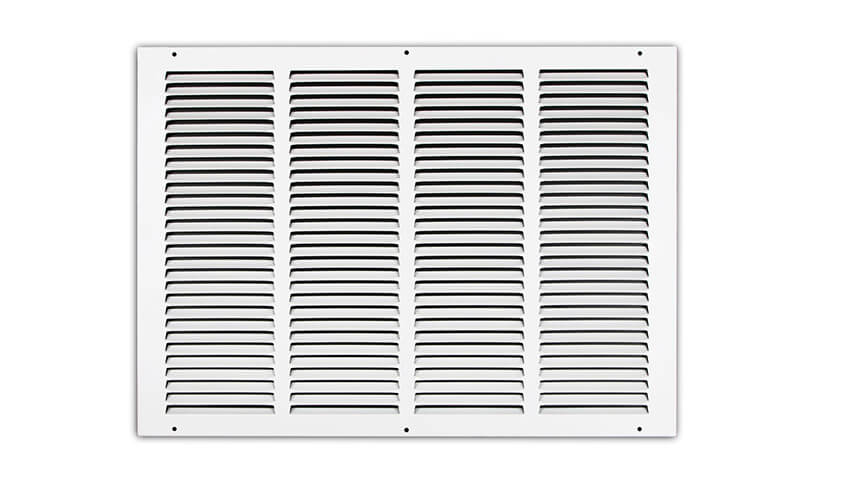
12. Are your floor grilles compliant with industry standards and regulations?
In the world of HVAC solutions, our factory doesn’t just make vents – we innovate them. Our floor grilles are not only compliant with industry standards and regulations, but they also set the bar higher in terms of quality and performance.
Built on Excellence
Our commitment to compliance is unwavering. Each grille is a testament to precision engineering, ensuring it meets both national and international safety and quality standards. But that’s just the start. We go beyond mere compliance to deliver products that truly resonate with market needs.
Advantages Tailored to Customer Needs
When it comes to our vents, it’s all about what you gain:
- Durability: Crafted with premium materials, our grilles stand the test of time.
- Efficiency: Optimized for maximum airflow, ensuring your spaces are well-ventilated without energy wastage.
- Aesthetic Appeal: With sleek designs, our grilles don’t just perform well; they look good doing it.
13. How do I install these floor grilles, and do you provide installation guides or support?
Installing HVAC floor grilles from our factory is as straightforward as it gets, ensuring a hassle-free experience even for first-timers. Here’s a quick guide to get you started:
- Measure and Mark: First, measure the area where you plan to install the grille. Precision is key to ensuring a perfect fit. Mark the corners for a guided cut-out.
- Cutting the Opening: Using your measurements, cut out the opening on the floor. It’s important to follow the marked lines closely for a snug fit.
- Positioning the Grille: Once the opening is ready, place the grille in it. Our grilles are designed to fit seamlessly, making this step a breeze.
- Securing the Grille: Secure the grille in place using the provided fasteners. This ensures stability and a long-lasting fit.
Comprehensive Support: We’re Here to Help
Don’t worry if you’re new to this. Our commitment to customer service shines here:
- Detailed Installation Guides: Each grille comes with an easy-to-follow installation manual. These guides are written in simple language and include illustrative diagrams for clarity.
- Online Support: Need more help? Our online support portal offers video tutorials, FAQs, and live chat support.
- Professional Assistance: For those who prefer a professional touch, we offer a network of trained installers. Contact us for recommendations in your area.
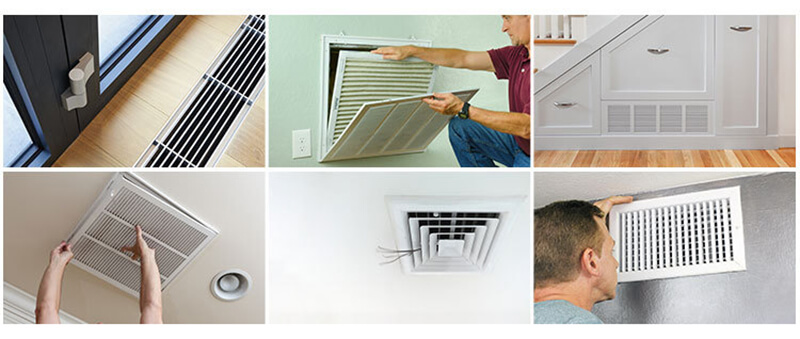
14. What is the warranty period for your floor grilles?
When it comes to investing in HVAC floor grilles, you deserve the peace of mind that comes with a solid warranty. Our factory stands firmly behind the quality of our products, and here’s what our warranty covers:
Duration of Warranty
- Standard Warranty Period: Our floor grilles come with a [insert specific time period, e.g., 5-year] warranty. This period begins from the date of purchase and covers you against any manufacturing defects or performance issues under normal usage conditions.
What Does the Warranty Include?
- Material and Craftsmanship: We guarantee that our floor grilles are free from any material or manufacturing defects. Our commitment to quality means you receive products built to last.
- Functionality: Ensuring our grilles perform optimally is a top priority. If you encounter any functional issues within the warranty period, we’ve got you covered.
How to Make a Warranty Claim
- Keep Your Purchase Proof: Always keep your purchase receipt. It’s your proof of purchase and essential for any warranty claims.
- Contact Us: If you face any issues, simply contact our customer service team. We’ll guide you through the easy claim process.
- Hassle-Free Resolution: Our goal is to resolve warranty claims swiftly. Whether it’s a replacement or repair, we ensure minimal inconvenience to you.
Beyond the Warranty: Our Ongoing Support
- Customer Service: Our customer support extends beyond the warranty period. We’re always here to assist with any queries or concerns.
- Maintenance Tips: To prolong the life of your grilles, we provide maintenance tips and best practices.
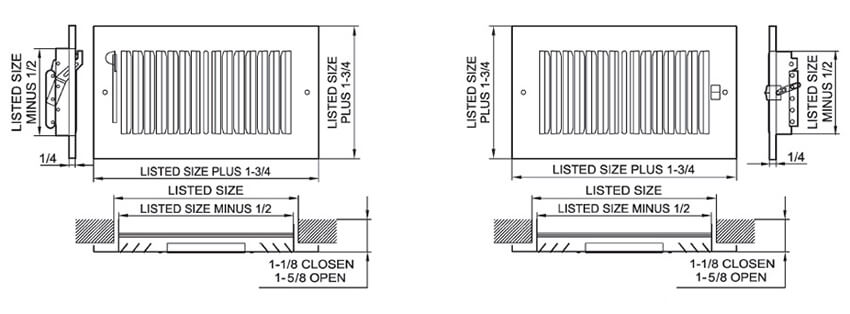
15. Can you provide references or case studies of previous installations?
Yes. we can provide. Through detailed case studies and genuine references, you get to see the tangible impact of our products and services.
Diverse Projects: Our portfolio includes a wide range of installations, from residential spaces to large commercial buildings.
Detailed Analysis: In our case studies, we delve into the specifics – the type of grille used, the installation process, and the impact on the overall HVAC system efficiency.
Client Testimonials: Hearing directly from our clients adds a layer of credibility. Their testimonials speak volumes about their satisfaction and the quality of our products and services.
References: Hear from Our Satisfied Customers
- Direct Contact: On request, we can provide contact details of past clients who have agreed to share their experiences. This direct line of communication allows you to get unbiased insights.
- Varied Industries: Our references span various industries, giving you a comprehensive view of our versatility and adaptability to different requirements.
Visual Evidence: Before and After
- Photographic Documentation: We believe in the power of visuals. Our before-and-after photos showcase the transformation brought about by our grilles, highlighting both aesthetic and functional upgrades.
- Video Walkthroughs: For a more in-depth look, some case studies include video walkthroughs of the installations, offering a real-time view of our grilles in action.
16. Are there eco-friendly or sustainable options available in floor grilles?
In today’s world, where environmental concerns are paramount, the question of sustainability in building materials is more relevant than ever. We recognize this need and are proud to offer eco-friendly options in our range of HVAC floor grilles.
Eco-Friendly Materials: The Heart of Green Building
- Recycled Materials: Many of our grilles are made from recycled materials, reducing the demand for new resources and minimizing waste.
- Sustainable Sourcing: We ensure that the raw materials for our grilles are sourced responsibly, prioritizing suppliers who share our commitment to the environment.
Energy Efficiency: More Than Just Materials
- Optimized Air Flow: Our grilles are designed to maximize airflow efficiency. This means your HVAC system doesn’t have to work as hard, reducing energy consumption and your carbon footprint.
- Longevity: Durable products mean less frequent replacements. Our grilles are built to last, making them a sustainable choice in the long run.
Eco-Friendly Manufacturing Processes
- Reducing Carbon Footprint: We employ manufacturing processes that are designed to minimize energy consumption and reduce greenhouse gas emissions.
- Waste Management: In our factories, waste reduction and recycling are key components of our production cycle.
Health and Safety: Indoor Air Quality
- Non-Toxic Coatings: The finishes on our grilles are non-toxic, ensuring they don’t release harmful VOCs (Volatile Organic Compounds) into your living or working space.
- Maintaining Indoor Air Quality: Our grilles contribute to a healthier indoor environment by efficiently managing airflow and filtration.
- Industry Certifications: Our eco-friendly grilles meet various industry standards and certifications, underscoring our commitment to sustainability.
- Continuous Improvement: We regularly update our practices to stay in line with the latest environmental standards and innovations.
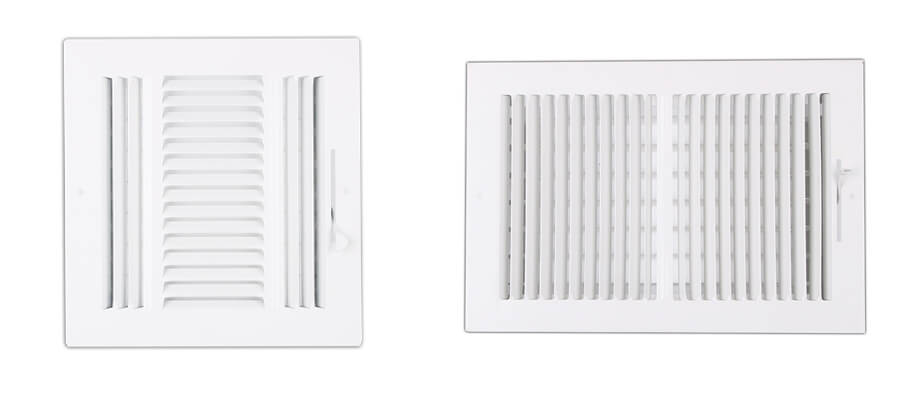
17. What is the typical lead time from order to delivery for floor grilles?
Lead Time Breakdown: A Step-by-Step Guide
- Order Processing (1-2 Days): Once you place an order, our team immediately swings into action. This phase involves order confirmation, payment processing, and preparing your order for production.
- Manufacturing (Varies): The heart of the lead time is the manufacturing process. Depending on the complexity and customization of your order, this can take anywhere from 3 days to 25 days (As the Quantity). We use this time to ensure every grille meets our quality standards.
- Quality Control (1-2 Days): After manufacturing, each grille undergoes rigorous quality checks. This step is crucial to ensure you receive a product that meets both our standards and your expectations.
- Packaging and Dispatch (1-2 Days): Once cleared, the grilles are carefully packaged and readied for dispatch. Our packaging is designed to protect the product during transit.
- Shipping and Delivery (Varies): The final leg of the journey is shipping, which can vary based on your location. Typically, this can range from [insert specific time frame, e.g., 3 days to 1 week]. We partner with reliable carriers to ensure timely and safe delivery.
Custom Orders and Lead Times
- Special Requests: Custom orders may have longer lead times due to the unique specifications. We’ll provide an estimated timeline at the start of the process.
18. Can you accommodate rush orders for floor grilles?
Rush Order Process:
- Expedited Manufacturing: We have a dedicated process for rush orders. This involves prioritizing your order in our production schedule to reduce manufacturing time.
- Efficient Quality Control: Even with expedited orders, our commitment to quality remains unwavering. We’ve streamlined our quality checks to ensure speed does not compromise quality.
- Swift Dispatch and Delivery: We work closely with our shipping partners to ensure that rush orders are dispatched quickly and delivered to you in the shortest possible time.
How to Place a Rush Order
- Contact Our Team: Reach out to our customer service team and specify that you require a rush order. We will immediately assess the feasibility based on current production schedules and material availability.
- Confirm Details and Costs: Rush orders may incur additional costs due to the expedited process. We will provide all details upfront for your approval.
- Stay Informed: Our team will keep you updated throughout the process, from manufacturing to delivery.
Considerations for Rush Orders
- Availability: The ability to accommodate a rush order depends on various factors, including current workload, stock availability, and the complexity of your request.
- Custom Orders: Customized grilles may require additional time, but we strive to meet your deadlines whenever possible.
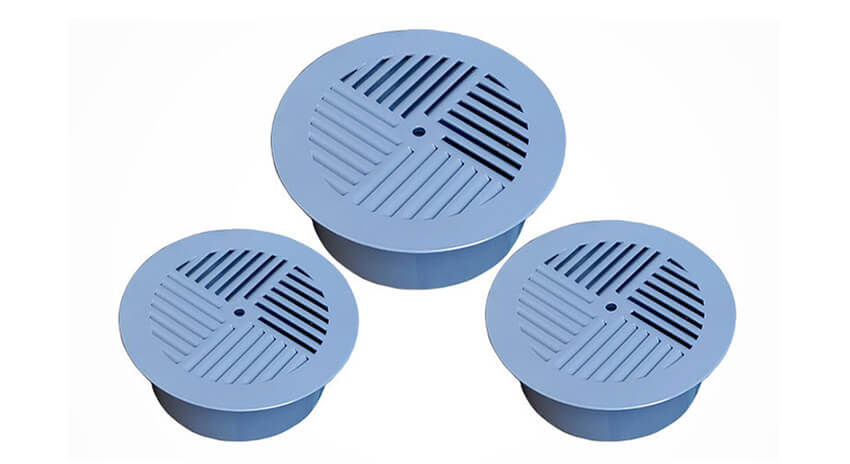
19. How do I properly measure the area for a floor grille installation?
Installing a new HVAC floor grille starts with one crucial step: accurate measurement. Proper measurement ensures a perfect fit and optimal performance. Here’s a straightforward guide:
Step-by-Step Measurement Guide
- Gather Your Tools: You’ll need a tape measure, a notepad, and a pencil. A straightedge or ruler can also be helpful for ensuring straight lines.
- Measuring the Opening:
- Length and Width: Measure the length and width of the opening where the grille will be installed. It’s important to measure from inside edge to inside edge for the most accurate dimension.
- Depth: While not always necessary, measuring the depth of the opening can be helpful, especially for certain types of grilles.
- Double-Check Measurements: Accuracy is key. Double-check your measurements to ensure they’re correct. It’s better to spend a few extra minutes measuring than to deal with the hassle of an ill-fitting grille.
- Note Any Obstructions: Be mindful of any obstructions around the opening, like floor molding or furniture. This can impact the fit and function of the grille.
Tips for Accurate Measurement
- Use the Right Tools: A metal tape measure is generally more accurate than a cloth one, which can stretch over time.
- Measure Twice, Cut Once: This age-old adage holds true. Double-checking measurements can save time and money.
- Consider Professional Help: If you’re unsure, consider seeking help from a professional. Accurate measurement is crucial for the best results.
20. Do you offer after-sales support or technical assistance for floor grille installations?
Our after-sales support and technical assistance for floor grille installations underscore our commitment to customer satisfaction. Whether it’s installation guidance, troubleshooting, or long-term maintenance, our team is dedicated to ensuring that your experience with our floor grilles is nothing short of exceptional.
After-Sales Support: Here for You Post-Purchase
- Comprehensive Assistance: Our customer service doesn’t end with your purchase. We offer extensive after-sales support to address any queries or concerns you might have post-installation.
- Installation Guidance: If you encounter any challenges during installation, our team is ready to provide guidance. Whether it’s a question about fitting your grille or adjusting it for optimal performance, we’re here to help.
- Troubleshooting Support: Facing an issue with your installed grille? Our technical team is adept at diagnosing and resolving problems, ensuring your HVAC system functions seamlessly.
Technical Assistance: Expertise at Your Fingertips
- Accessible Knowledge Base: Our online resources, including FAQs, installation guides, and troubleshooting tips, are available to assist you at any time.
- Direct Contact with Technicians: For more complex issues, you can directly contact our experienced technicians. They’re equipped to provide detailed, step-by-step assistance.
- Regular Updates and Tips: We provide regular updates and tips to help you maintain and get the most out of your floor grilles.
Customized Solutions
- Tailored Assistance: We understand that every installation can be unique. Our team is prepared to offer customized solutions to fit your specific needs and circumstances.
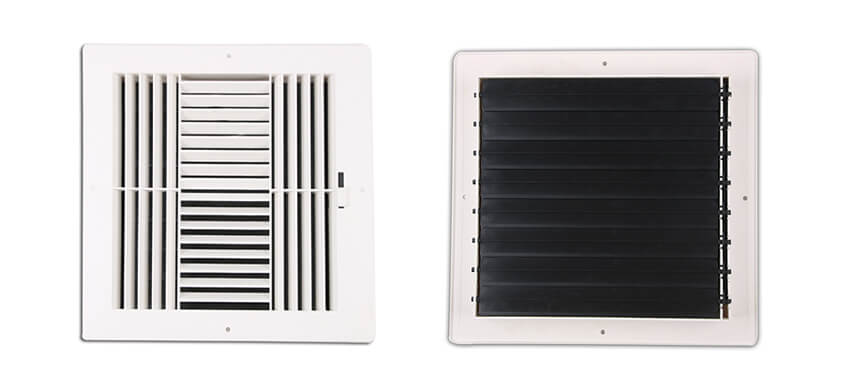
Need High-quality HVAC Grilles and Diffusers? Shoot us a message, and I’ll be happy to assist you in picking the right grilles or diffusers for your needs.

